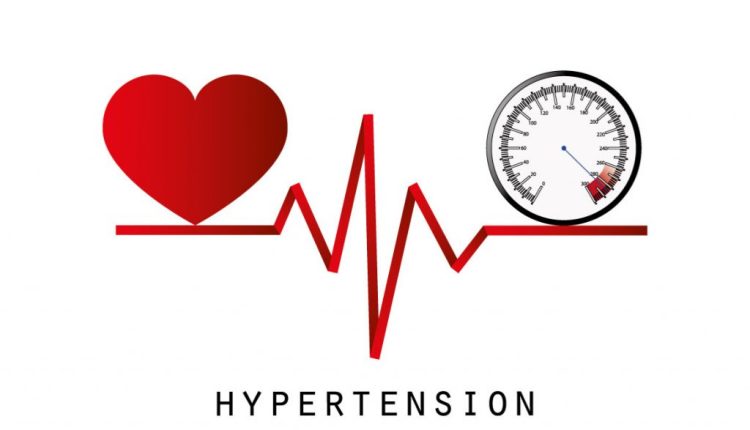Urgent Warning: Are You Fighting the Deadly “Silent Killer” Hypertension? Find Out How to Protect Yourself!

Recently, Nigeria joined the rest of the world to mark this year’s World Hypertension Day, and also bring to the fore salient issues about the “silent killer”.
This year’s theme “Measure Your Blood Pressure Accurately, Control It, Live Longer,” emphasises the crucial need for taking regular and accurate blood pressure readings as the cornerstone for efficient hypertension management and living longer, healthier lives.
The theme has been repeated since 2021, to emphasise the importance of a proper hypertension diagnosis.
World Hypertension Day is a global health awareness initiative focused on educating the public about the dangers of high blood pressure and promoting the importance of regular monitoring and healthy lifestyle choices.
Experts describe hypertension as a “silent killer” because it usually shows no symptoms but can lead to life-threatening complications like heart attacks, strokes, kidney damage, and vision loss.
Globally, it is estimated that over 1.3 billion people are affected, with only about half being diagnosed and treated effectively
Hypertension is consistent across all socio-economic and income strata, and its prevalence rises with age.
A global health survey report states that the number of people with hypertension is anticipated to increase by 15-20 per cent, reaching close to 15 billion by 2025.
Hypertension, in the words of the World Hypertension League (WHL), is ‘a driving force in the global epidemic of non-communicable diseases (NCDs) and the leading risk factor for death and disability globally.
According to Global Health Research and Policy, a nongovernmental organisation (NGO) hypertension, commonly known as high blood pressure, remains a significant public health challenge globally, with Nigeria being no exception.
Its prevalence in Nigeria has been increasing over the past several decades, with recent estimates ranging from 22 per cent to 44 per cent, which varies by region.
For Nigeria, this year’s commemoration is apt, given the life changing upheavals many households have been subjected to for at least, almost two years now.
Nigerian households are grappling with a multitude of hardships, including high inflation, and rising poverty rates, which has made life difficult with adverse effect on health.
For decades now, the country has faced significant challenges in ensuring equitable access to healthcare, with disparities existing between urban and rural areas, and limited access to essential services and insurance.
While some progress has been made in some areas, challenges remain in accessing vaccinations and affordable medications.
Considering the poverty level in the country, the medication cost burden of managing hypertension and other associated illnesses like diabetes is high and unaffordable by most of the patients, including civil servants whose basic salary is N70,000.
The high cost of medication is a significant burden for many patients, leading to potential treatment discontinuation or non-adherence.
According to reports, cost of hypertension medication in Nigeria varies widely, influenced by factors like the specific drugs prescribed, the number of medications needed, and the pharmacy or clinic.
For instance, the cost of glucometer, a medical device used to monitor blood sugar levels, has also soared.
A glucometer now costs around N30,000 Naira, up from N6,000 Naira, and the test strips used with them have also become significantly more expensive.
The financial strain is forcing difficult choices, with many patients having to sacrifice basic needs or family obligations to afford their medication.
The National Health Insurance Act (NHIA) has seen limited enrollment, with less than five per cent of the population participation.
In addition, awareness, treatment, and control rates remain low as a 2021 meta-analysis of Nigerians with hypertension, stated that only 29 per cent were aware of their diagnosis, 12 per cent were on treatment, and a mere three per cent achieved control, whereas other studies have reported modestly higher control rates.
Currently, hypertension is defined as systolic blood pressure of 130 mmHg or more and/or diastolic blood pressure of more than 80 mmHg according to the American College of Cardiology (ACC).
We recognise that the commemoration of the day helps shift focus from treatment to prevention and empowers individuals to take control of their cardiovascular health through early detection and lifestyle changes.
By promoting widespread awareness, we can reduce the global burden of hypertension and improve health outcomes worldwide.
The primary goal is to increase public awareness of hypertension and encourage proactive screening, especially as the condition often presents no symptoms until serious complications arise.
The World Hypertension League (WHL) said that hypertension is a driving force in the global epidemic of non-communicable diseases (NCDs) and the leading risk factor for death and disability globally.
The campaign also highlights the importance of accurate blood pressure measurement, lifestyle management, and accessible healthcare to reduce the global burden of hypertension.
World Hypertension Day, initiated by the WHL, a division of the International Society of Hypertension in 2005, aims to increase awareness of this silent killer, and galvanise global action to combat high blood pressure.
Experts advocate that people adopt a heart-healthy lifestyle: Reduce salt intake, exercise regularly, maintain a healthy weight, limit alcohol, and quit smoking.
